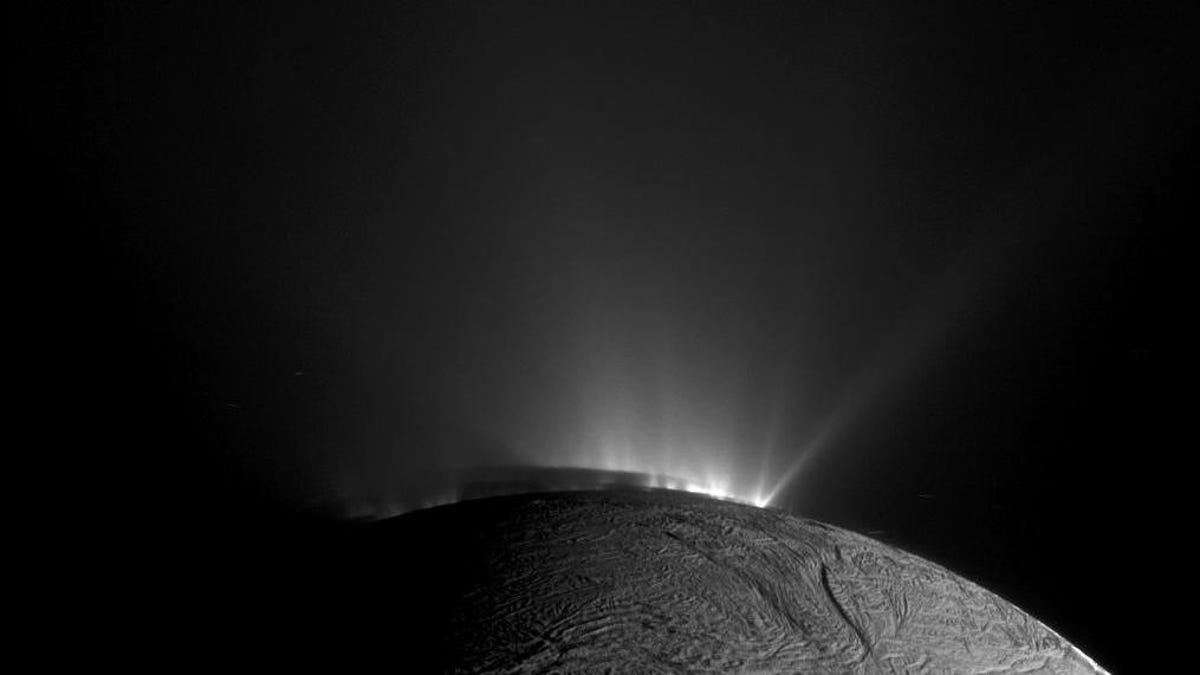Good news, everyone! Scientists discovered additional evidence suggesting the potential habitability of a peculiar icy moon orbiting Saturn, one of the planet’s 146 moons.
Google’s AI Isn’t a Gimmick, It’s the Future | AI Unlocked
Although tiny, Enceladus is one of the most likely places in the solar system to host life. Over the years of research, Enceladus has stacked up plenty of data to back up this claim as the moon spews organic compounds that are essential ingredients for life. Now, scientists have found more reason to root for Enceladus, discovering strong evidence for a molecule that is key to the origin of life, as well as a source of energy to charge it. The team’s findings were published Thursday in Nature Astronomy.
Using data gathered by the Cassini spacecraft (NASA’s trusty Saturn probe), a team of researchers confirmed hydrogen cyanide on Enceladus. “The discovery of hydrogen cyanide was particularly exciting, because it’s the starting point for most theories on the origin of life,” Jonah Peter, a doctoral student at Harvard University, and lead author of the new study, said in a statement.
The linear molecule (a straight-chain arrangement of atoms), is thought to have reached Earth via meteorites and, through chemical reactions, contributed to the formation of amino acids. The new study also suggests that Enceladus’ ocean could act as a source of chemical energy. The ocean runs beneath Enceladus’ icy surface, where plumes of water vapor rich in organic molecules spews out from the moon.
The Cassini spacecraft observed Enceladus during its 20 year mission around Saturn and saw the moon erupting with large plumes of water through cracks in its icy surface. Cassini also flew through the moon’s plumes and detected organic compounds, including amino acids and phosphorus.
The new research suggests that Enceladus holds a lot more chemical energy than previously believed, increasing the chances that life can be born and sustained on the tiny moon.
“Our work provides further evidence that Enceladus is host to some of the most important molecules for both creating the building blocks of life and for sustaining that life through metabolic reactions,” Peter said.
Combining carbon dioxide, methane, and hydrogen, all found in the plumes emitted by Enceladus, could lead to methanogenesis, a metabolic process that produces methane. On Earth, that process was a crucial to the formation of life on Earth.
“If methanogenesis is like a small watch battery, in terms of energy, then our results suggest the ocean of Enceladus might offer something more akin to a car battery, capable of providing a large amount of energy to any life that might be present,” Kevin Hand, co-author of the study and principal investigator behind the new findings at NASA’s Jet Propulsion Laboratory, said in a statement.
Even though Cassini plunged through Saturn in 2017, ending its mission in style, data collected by the spacecraft is the gift that keeps on giving. The latest findings aren’t exactly proof that life exists on Enceladus, but it suggests there may be chemical pathways through which the icy moon can host and sustain life.
For more spaceflight in your life, follow us on X (formerly Twitter) and bookmark Gizmodo’s dedicated Spaceflight page.
